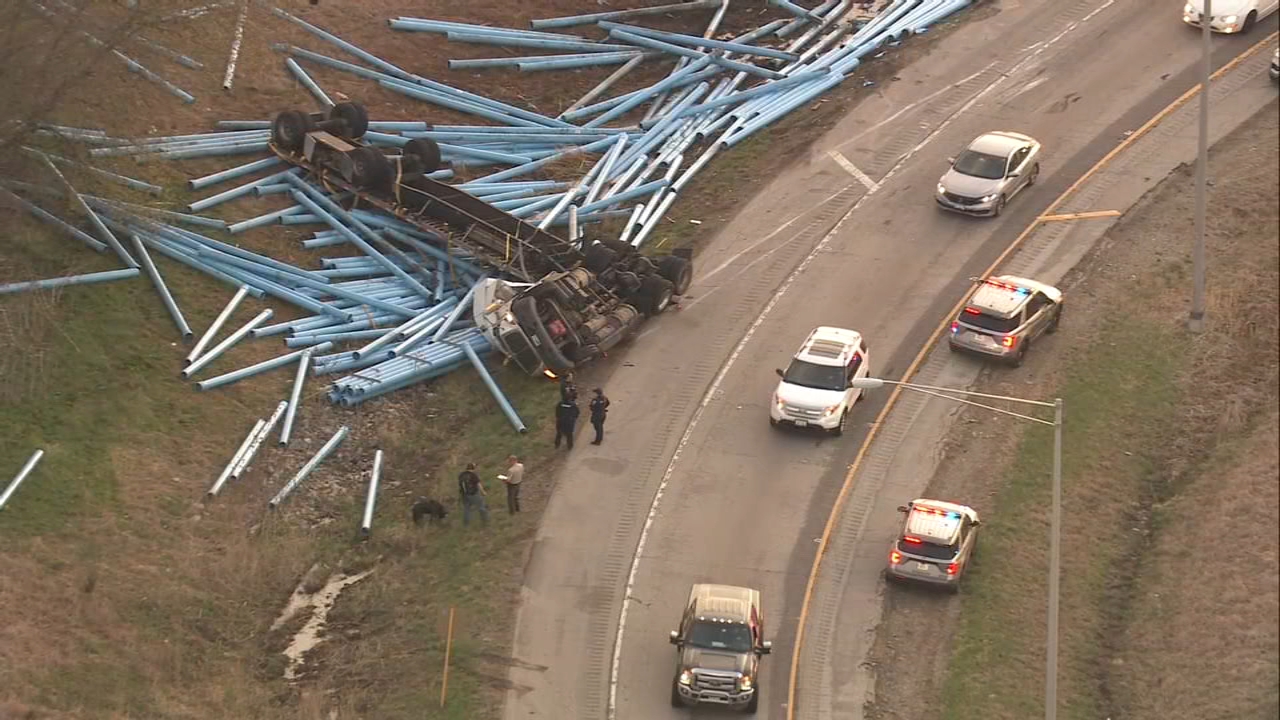CTA train crash: Would emergency braking technology have prevented the Yellow Line accident?

CHICAGO (WLS) -- The Chicago Transit Authority and other subway-based systems have what amounts to a safety exemption that gives them a pass from a federally-required technology called "Positive Train Control," the I-Team discovered on Thursday.
Positive Train Control is required on Metra, Amtrak and other mainline railroad systems across the and are designed to automatically prevent derailments, and train-to-train collisions like the CTA accident that took place on Thursday.
Officials say about 10:30 a.m. Thursday, a CTA Yellow Line train collided with a diesel-powered snow removal train going the same direction, on the same tracks near the Howard CTA Depot, between the Howard and Oakton CTA train stops.
Less than two hours before, radio traffic for the CTA obtained by the I-Team indicates train operators were informed about personnel working in the area where the collision would later occur.
Just before 8:55 a.m., a CTA dispatcher can be heard on an agency radio recording saying, "Control to all Yellow Line operators, at this time we have personnel on the right away from Howard to Oakton."
Less than two hours later, the collision occurred, injuring at least 38 people including passengers.
CTA officials did not respond to the I-Team's questions regarding this radio traffic, but experts say automatic braking technology installed on trains is a vital tool in preventing these types of accidents.
Chicagoland's METRA commuter line, and similar rail transit agencies across the country are required by federal regulations to have automatic braking systems in place.
Rail lines across the country spent more than a decade and $15 billion dollars installing the safety technology, called "Positive Train Control."
But the CTA is excluded from that, according to the Federal Railroad Administration, because the CTA isn't linked to the national rail network, and doesn't fall under federal railroad regulations.
DePaul University Transportation Professor Joe Schwieterman tells the I-Team that a required automatic braking system, like Positive Train Control, could have prevented this accident near the north side Howard station.
"Actions like this really do raise the pressure to adopt Positive Train [Control] everywhere," Schwieterman said, adding that the national rollout of the technology had its struggles.
Schwieterman continued, "[Positive Train Control] has proven to be really complex, technology-wise. There has been a number of false starts, deadlines have been extended. I think the federal government overreached initially and is up backtracking with some of the deadlines."
"Old line systems like the CTA have been given less of a regulatory mandate to roll it out than commuter railroads," Schwieterman told the I-Team.
The National Transportation Safety Board (NTSB) in 2009 recommended positive train control systems for all rail transit systems nationwide.
Following a 2014 CTA crash at the O'Hare Airport station, the NTSB reiterated its position that Positive Train Control was necessary.
Schwieterman said Thursday's accident should finally be a wake-up call for regulators.
"Positive Train Control could have done some good here," Schwieterman said.
The CTA did not respond to the I-Team's questions regarding whether its trains have any kind of emergency braking system technology installed.
Instead, CTA President Dorval R. Carter, Jr. said the agency is focused on the victims in Thursday's crash, and that it will cooperate with federal regulators leading the investigation into the crash.
"The National Transportation Safety Board announced they will be leading this investigation... CTA intends to cooperate fully with the NTSB," Carter's statement reads. "Right now, our focus is on the customers and CTA employees who were injured in this incident."










